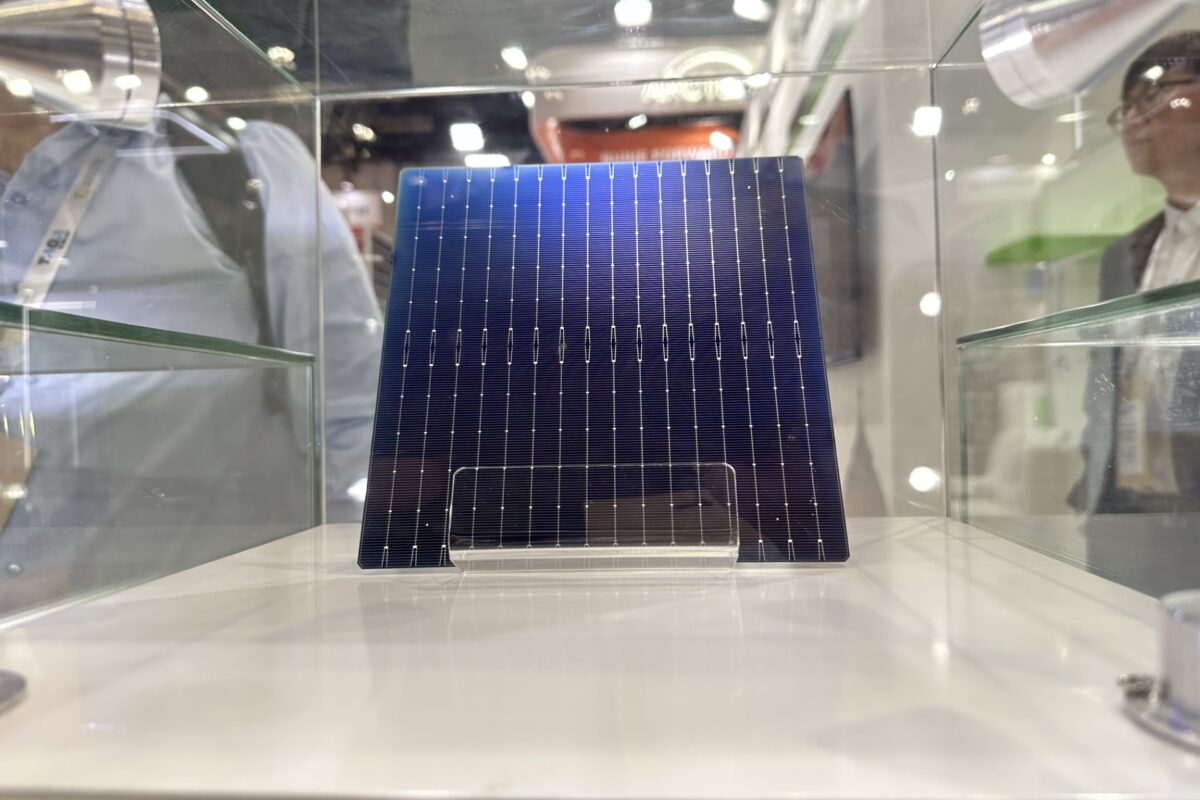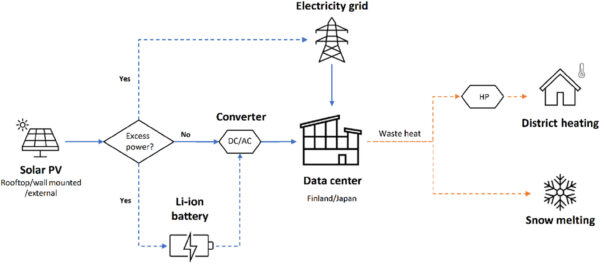A Japanese-Finnish research group assessed the levelized energy costs of solar power plants that supply electricity to data centers in cold climates and found that PV electricity can be significantly cheaper than grid electricity, even when used with battery storage.
An international research team has analyzed how solar energy can be used to power data centers (DCs) in cold climate regions, along with utilizing the data center’s waste heat.
They simulated different scenarios of DCs in Finland and Northern Japan and took into account energy prices for 2019, before the COVID-19 pandemic and before the energy crisis in Europe, and 2023 rates.
“Local renewable energy production and the use of waste heat are still rarely used in data centres, even though recent high electricity prices have significantly increased the economic value of investments in self-generation and energy efficiency,” the academics said. “The benefits and cost-effectiveness of data center sustainability measures have also not been thoroughly investigated in cold climate regions, where the data center industry is currently growing rapidly.”
The DCs and energy infrastructure were simulated on MATLAB, with two scenarios in Helsinki and two scenarios in the northern Japanese city of Sapporo. The electricity consumption data was based on recorded values for an operational DC in southern Finland, as well as modeled consumption profiles for a DC in northern Japan.
“Both locations share a cold climate and many of the competitive advantages identified as key criteria for the DC industry, but with clear differences in the effectiveness of solar energy, electricity supply and use of waste heat,” the group pointed out. “In particular the generation profile of solar PV systems.”
For each location, the academics simulated both a medium-sized DC, with a load of 2.5 MW, and a hyperscale DC, with a load of 25 MW. In the case of Helsinki, they considered using a 0.96 MW PV system on the roof of the smaller power plant and 9.6 MW on the roof of the largest power plant; in Japan the load was 0.48 MW and 4.8 MW respectively. In addition, the smaller DCs at both locations had an external PV production of 5 MW, and the hyperscale DCs had 50 MW. The smaller plants had a 10 MWh lithium-ion battery (LIB), while the larger plants had 100 MWh of storage capacity.
“Each scenario assessed the effectiveness of both rooftop solar PV systems and external solar PV systems, with the option to sell excess solar PV electricity to the grid or store it to be used in subsequent hours meet demand using LIBs,” the group said. “The Helsinki scenarios used DC waste heat to produce district heating (DH) in the Helsinki region, while the Japanese scenarios assessed the possibility of using waste heat for snow melting in the Sapporo region.”
Image: Aalto University, Renewable and Sustainable Energy Reviews, CC BY 4.0
The difference in the use of residual heat is due to the different circumstances in the countries. While existing DH networks in Finland could allow recovered waste heat to be used effectively to heat buildings, in northern Japan there is a high demand for more efficient ways to remove snow during winter, with the city of Sapporo spends more than €150 million ($163 million) per year.
“A rooftop solar PV system in both 2.5 MW and 25 MW data centers would have a life cycle cost (LCC) of approximately €1.30 million/MW in both Finland and Japan, while a larger PV system would be able is to sell excess electricity to the grid. would cost between €0.96 million/MW and €1.21 million/MW over its lifetime in Finland, or between €1.03 million/MW and €1.12 million/MW in Japan,” the researchers explain.
Popular content

According to their findings, the rooftop solar PV system in Finland would have a levelized cost of electricity (LCOE) of €89.1/MWh, compared to the cost of electricity from the grid of €59.7/MWh in 2019 and € 171/MWh in 2022. The LCOE of the larger PV system varies between €74.8/MWh and €94.9/MWh, depending on electricity prices.

Image: Aalto University, Renewable and Sustainable Energy Reviews, CC BY 4.0
“Japan’s higher overall electricity prices and better solar performance make both rooftop and larger solar PV systems profitable in most scenarios, as the LCOE of PV electricity is only between €62.9/MWh and €70.1/ MWh is compared to the LCOE of electricity from the electricity grid. at €126.8/MWh in 2019, and €223.2/MWh in 2023,” the group said. “Similarly, the greater amount of solar radiation available in northern Japan also makes battery storage more effective in Japan, with an LCOE of €176.9/MWh, making it a viable option at current electricity prices.”
“Selling excess PV electricity to the grid and using waste heat for district heating also proves to be effective in data centers in Finland, while battery storage and snow melting are better suited to use excess PV electricity and waste heat from data centers in North Japan to use. ”, the academics concluded.
Their findings were presented in “Potential of solar photovoltaics and waste heat use in cold climate data centers. Case study: Finland and Northern Japan,” published in Renewable and sustainable energy assessments. The group consisted of scientists from Finland’s Aalto University and Japan’s Hokkaido University.
This content is copyrighted and may not be reused. If you would like to collaborate with us and reuse some of our content, please contact: editors@pv-magazine.com.

